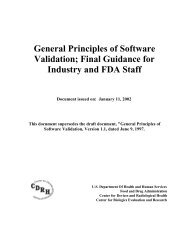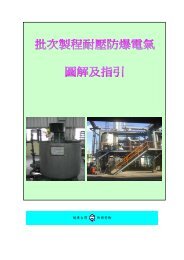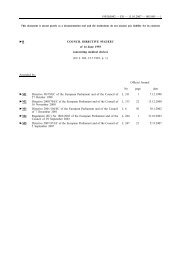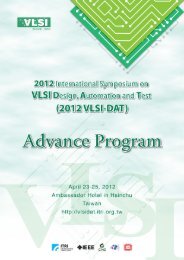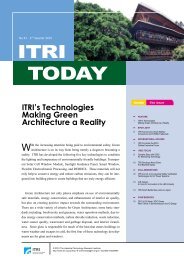Design Control Guidance - Food and Drug Administration
Design Control Guidance - Food and Drug Administration
Design Control Guidance - Food and Drug Administration
You also want an ePaper? Increase the reach of your titles
YUMPU automatically turns print PDFs into web optimized ePapers that Google loves.
the product developer(s) ultimately bear responsibility for translating user <strong>and</strong>/or patientneeds into a set of requirements which can be validated prior to implementation. Whilethis is primarily an engineering function, the support or full participation of production <strong>and</strong>service personnel, key suppliers, etc., may be required to assure that the design inputrequirements are complete.Care must be exercised in applying this principle. Effective development of design inputrequirements encompasses input from both the product developer as well as thoserepresenting the needs of the user, such as marketing. Terminology can be a problem. Insome cases, the product conceptual description may be expressed in medical terms.Medical terminology is appropriate in requirements when the developers <strong>and</strong> reviewers arefamiliar with the language, but it is often preferable to translate the concepts intoengineering terms at the requirements stage to minimize miscommunication with thedevelopment staff.Another problem is incorrect assumptions. Product developers make incorrectassumptions about user needs, <strong>and</strong> marketing personnel make incorrect assumptions aboutthe needs of the product designers. Incorrect assumptions can have serious consequencesthat may not be detected until late in the development process. Therefore, both productdevelopers <strong>and</strong> those representing the user must take responsibility for critically examiningproposed requirements, exploring stated <strong>and</strong> implied assumptions, <strong>and</strong> uncoveringproblems.Some examples should clarify this point. A basic principle is that design inputrequirements should specify what the design is intended to do while carefully avoidingspecific design solutions at this stage. For example, a concept document might dictatethat the product be housed in a machined aluminum case. It would be prudent for productdevelopers to explore why this type of housing was specified. Perhaps there is a validreason—superior electrical shielding, mechanical strength, or reduced time to market ascompared to a cast housing. Or perhaps machined aluminum was specified because acompetitor’s product is made that way, or simply because the user didn’t think plasticwould be strong enough.Not all incorrect assumptions are made by users. Incorrect assumptions made by productdevelopers may be equally damaging. Failure to underst<strong>and</strong> the abuse to which a portableinstrument would be subjected might result in the selection of housing materialsinadequate for the intended use of the product.There are occasions when it may be appropriate to specify part of the design solution inthe design input requirements. For example, a manufacturer may want to sharecomponents or manufacturing processes across a family of products in order to realizeeconomies of scale, or simply to help establish a corporate identity. In the case of aproduct upgrade, there may be clear consensus regarding the features to be retained.However, it is important to realize that every such design constraint reducesimplementation flexibility <strong>and</strong> should therefore be documented <strong>and</strong> identified as a possibleconflicting requirement for subsequent resolution.Section C. <strong>Design</strong> Input 3/11/97 Page 15




